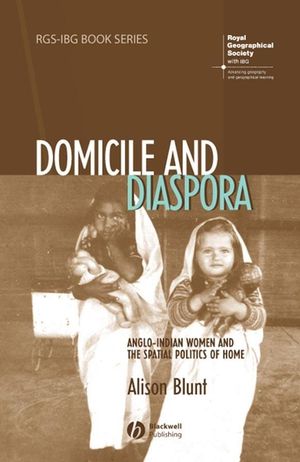The Origins, Current Status, and Future Prospects of Blood Quantum as the Definition of Membership in The Navajo Nation
Tribal Law Journal
University of New Mexico School of Law
Volume 8 (2007-2008)
pages 1-17
Paul Spruhan, Law Clerk
Navajo Nation Supreme Court, Window Rock, Arizona
In this article, the author discusses the origin of the Navajo Nation’s blood requirement. Mr. Spruhan examines the intended purpose of the quarter-blood quantum definition and the role of the Bureau of Indian Affairs. He reviews the current status, regulation, and recent attempts to change the quarter-blood quantum requirement. He discusses the future of the quarter-blood quantum requirement with respect to the Navajo Nation Council’s 2002 resolution known as the “Fundamental Laws of the Diné,” a resolution mandating the application of traditional law, customary law, natural law, and common law to the Navajo Nation Government and its entities. In this regard, Mr. Spruhan inquires as to the impact the “Fundamental Laws of the Diné” will have on the quarter-blood quantum requirement and future membership requirements.
In the last few years, scholars, reporters, lawyers, and the general public have focused much attention on tribal membership requirements. Recent controversies over membership of “Freedmen,” or descendants of slaves, in the Cherokee Nation and other Oklahoma tribes have produced scholarly and popular discussions of what it means to be “Indian” and a member of a tribal nation. Enrollment controversies among gaming tribes in California and recently recognized tribes in Rhode Island and Massachusetts, among others, have exposed acrimonious disagreements within tribal communities over how to define tribal membership. Tribes have disenrolled whole extended families and entire categories of members by reviewing prior enrollment records, or amending their laws to redefine membership eligibility. Popular press reports and scholarly articles on these controversies have introduced the concepts of “blood quantum” and “tribal membership” to a wider non-Indian audience. The resulting publicity has tested the power of tribal nations to define their membership independent of state and federal judicial and political control, as calls for outside intervention increase.
In the midst of these controversies, a recent panel at a continuing legal education seminar held in Window Rock, the capital of the Navajo Nation, discussed whether the Nation would experience similar membership controversies in the future, and how such issues might be approached under Navajo law. This article arises out of a presentation the author gave at that seminar on the origins of the Navajo Nation’s current membership rule, which requires a person to have at least one-quarter Navajo “blood.” The presentation described the origins of this requirement in light of the origins of “blood quantum” in federal Indian law, which the author has described in two previous law review articles.
Based on that presentation and the presentations of other panelists, as well as a lively discussion with members of the audience, this article aims to do several things. In Part I, the article describes the origins of the Navajo Nation’s quarter-blood requirement in an attempt to answer the question: how and why did the Navajo Nation adopt blood quantum as the definition for membership? Part I describes how that requirement came about through the resolutions and minutes of meetings of the Navajo Nation Council, and examines what Council delegates thought they were accomplishing through the quarter-blood definition. Part I also discusses the role of the Bureau of Indian Affairs in the development of that membership definition. In Part II, the article discusses the current status of the quarter-blood requirement, how the Navajo Nation regulates it, and recent attempts to change the requirement. In Part III, the article analyzes the future prospects for the quarter-blood requirement, and blood quantum generally, in light of recent developments in Navajo Nation statutory law and the jurisprudence of the Navajo Nation Supreme Court concerning the “Fundamental Laws of the Diné.”…
…How might the quarter-blood requirement fare under a Fundamental Law analysis? Would the fact that blood quantum is not a traditional Navajo concept affect its enforceability? The concept of “blood quantum” originated in Anglo-American colonial law to define the status of mixed-race people and bar them from rights afforded whites. The federal government adopted this pre-existing concept to define “Indian” and “tribal member” for various purposes long before the Navajo Nation Council adopted blood quantum in 1953. Traditionally, Navajos use clanship to define identity. Each Navajo has four clans he or she identifies himself or herself by: the mother’s clan, the father’s clan, the maternal grandfather’s clan, and the paternal grandfather’s clan. A Navajo is a member of his or her mother’s clan and is “born for” his or her father’s clan. According to Navajo history, there were four original clans, and many clans that were subsequently adopted. Some of the adopted clans originate from Pueblo or other tribal peoples, as well as Mexicans, who were adopted into Navajo society. Various “non-Navajos” were absorbed into the Navajo people, and clans were created to conform them to the existing system of identity. Navajos also define themselves by “cultural identity markers” derived from origin stories, identified by one Navajo scholar, Lloyd Lee, as “worldview, land, language, and kinship.” Practicing the principles of hozho and sa’ah naaghai bik’eh hozhoon, speaking the Navajo language, and recognizing Navajo kinship, Lee argues, are the true definition of Navajo identity. Blood quantum plays no part in these conceptions of Navajo identity. Significantly, these concepts were essentially absent from the discussions of the prior Council in adopting the quarter-blood requirement…
Read the entire article here.

